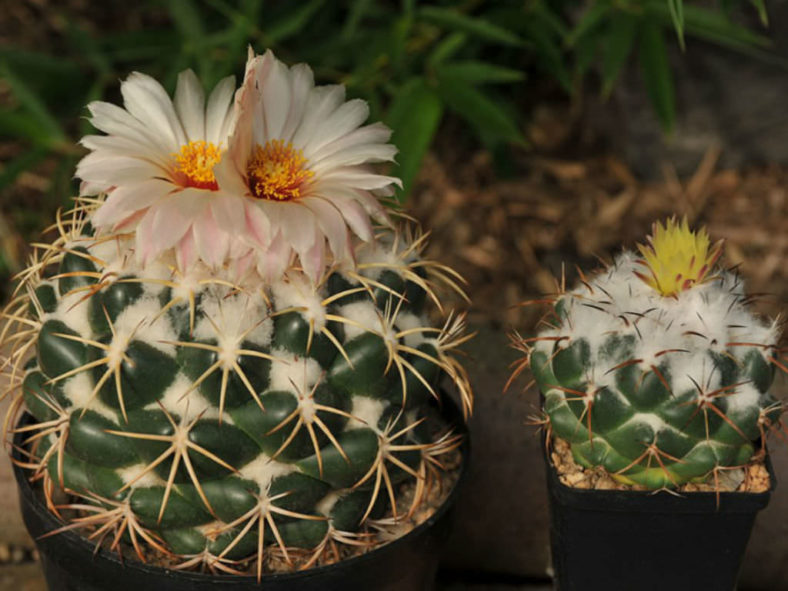Coryphantha is a genus of small to medium-sized globose or columnar cacti commonly known as Beehive Cactus. They are native to arid parts of Central America, Mexico, Arizona, New Mexico, western Texas, and north into southwestern, central, and southeastern Montana. With its 57 species and 20 subspecies, it is one of the largest genera of cacti. The generic name "Coryphantha" is from Greek and means "flowering on the top."
Most species were once included in the genus Mammillaria. They differ primarily in that Coryphantha flowers from the first year of growth at the apex of the stems. In contrast, Mammillaria do not flower from new growth; instead, they flower in rings further down the plant, primarily in second-year growth.
This genus is not rare in cultivation, but plants often exist without adequate identification. It is especially problematic because Coryphantha are pretty variable from seedling to mature age plants. Likewise, the presence of a central spine and extrafloral nectaries is variable even in mature plants. In this way, several specimens of the same species may appear quite different based on their age or expressed traits.

Growing Conditions and General Care
If you can grow cacti and succulents successfully, you can likely grow Coryphanthas without too much trouble. They love to be in very bright exposure, but generally not to direct sunlight. The risk, especially during the hottest hours of the day and during the summer, is getting sunburned.
The average winter temperature, in general, should not fall below 40 °F (5 °C) unless there are individual exceptions. Mature plants (at least two years of age) can withstand frosts, but only if the temperature rises quickly. To encourage better flowering, allow the plants to enjoy a cooling period in the winter and suspend watering.
Allow the soil mix to become nearly dry between waterings, then water thoroughly. Immaculate drainage is essential, so never let the pots sit in water. Suspend watering in the winter, but mist occasionally.
These cacti are very susceptible to rot and therefore require well-drained soil. Use a potting mix labeled for cacti or succulents.
Coryphantha are slow-growing plants and do not require much fertilizer. But if you want to fertilize your cactus regularly, do so in spring and summer with a general-purpose fertilizer formulated for use on houseplants. Follow the directions on the packaging.
Repotting
Repot as needed, preferably during the warm season. To repot Coryphantha, ensure the soil is dry before repotting, then gently remove the pot.
Propagation
Coryphanthas are usually started from seeds.
Links
- Back to genus Coryphantha
- Succupedia: Browse succulents by Scientific Name, Common Name, Genus, Family, USDA Hardiness Zone, Origin, or cacti by Genus